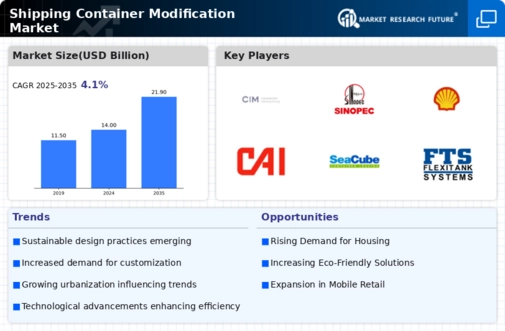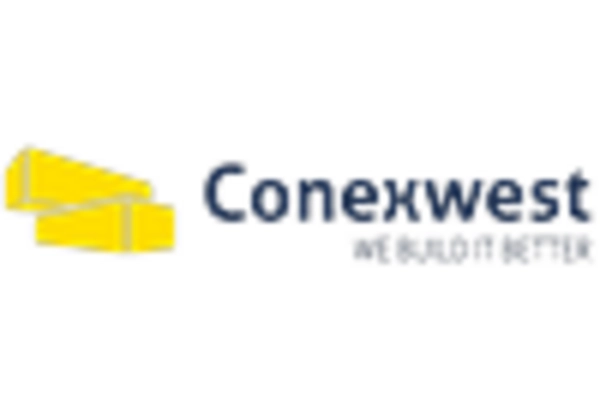Cost-Effectiveness
Cost-effectiveness remains a significant driver in the Shipping Container Modification Market. The use of shipping containers as building materials can substantially reduce construction costs compared to traditional methods. This financial advantage is particularly appealing to startups and small businesses looking to minimize overhead while maximizing space. Market analysis indicates that the initial investment in modified containers often yields long-term savings, as they require less maintenance and can be repurposed for various uses. As economic pressures persist, the appeal of cost-effective solutions is expected to drive further interest in shipping container modifications, making them a viable option for many.
Versatile Applications
The versatility of shipping containers is a key driver for the Shipping Container Modification Market. These containers can be transformed into a wide array of structures, including offices, retail spaces, and even schools. This adaptability appeals to various sectors, from commercial to educational, thereby broadening the market's potential. Data indicates that the market for modified shipping containers is diversifying, with an increasing number of businesses exploring unique applications. This trend suggests that as industries seek innovative solutions to space constraints, the demand for modified containers will likely continue to rise, further solidifying their role in modern construction.
Sustainability Initiatives
The increasing emphasis on sustainability initiatives appears to drive the Shipping Container Modification Market. As businesses and consumers alike become more environmentally conscious, the demand for eco-friendly construction solutions rises. Shipping containers, being inherently recyclable, offer a sustainable alternative to traditional building materials. This trend is reflected in the growing number of modified container projects that prioritize energy efficiency and reduced carbon footprints. According to recent data, the market for sustainable building materials is projected to grow significantly, indicating a favorable environment for shipping container modifications. Companies that adopt these practices may find themselves at a competitive advantage, as they align with consumer preferences for sustainable options.
Urbanization and Housing Demand
Rapid urbanization and the corresponding demand for affordable housing are likely to propel the Shipping Container Modification Market. As urban populations swell, the need for innovative housing solutions becomes increasingly urgent. Shipping containers provide a cost-effective and efficient means of addressing this housing crisis. Reports suggest that the modified container housing market is expected to expand, with a notable increase in projects aimed at providing quick and affordable living spaces. This trend is particularly evident in densely populated areas where traditional construction methods may be impractical or too slow to meet demand. The adaptability of shipping containers makes them an attractive option for urban developers.
Regulatory Support and Incentives
Regulatory support and incentives for alternative building methods are emerging as a crucial driver in the Shipping Container Modification Market. Governments are increasingly recognizing the need for innovative housing solutions and are implementing policies that encourage the use of modified shipping containers. This includes zoning law adjustments and financial incentives for developers who choose sustainable building practices. Recent trends indicate that such regulatory frameworks are likely to foster growth in the market, as they lower barriers to entry for new projects. As more jurisdictions adopt supportive measures, the shipping container modification sector may experience accelerated expansion.


















Leave a Comment